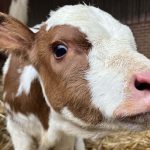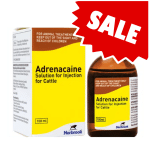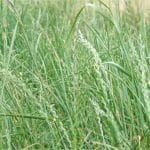The rise of sheep scab & lice infestations is a critical challenge faced by livestock farmers as autumn settles in across the UK. These parasitic conditions not only compromise animal welfare but also lead to significant economic losses if left unchecked. With cooler temperatures and increased housing of animals, autumn becomes a prime season for outbreaks. In this article we will provides essential surveillance tips to help you stay ahead of the curve and protect your flocks.
What Is Sheep Scab?
Sheep scab is a highly contagious skin disease caused by the Psoroptes ovis mite. It leads to intense itching, wool loss, and severe skin irritation. If untreated, it can result in weight loss, secondary infections, and even death. The disease spreads rapidly through direct contact or contaminated equipment, making early detection and isolation vital.
Lice in Sheep: A Silent Menace
Lice infestations, particularly from Bovicola ovis, are another common issue in autumn. These biting lice cause irritation, restlessness, and fleece damage. Unlike sheep scab, lice spread more slowly but can still impact productivity and fleece quality. Differentiating between lice and scab is crucial, as treatments differ significantly.
Why Autumn Surveillance Matters
Autumn is a high-risk period for several reasons:
- Increased housing: Close quarters facilitate speedier parasite transmission.
- Wool growth: Longer fleece provides a perfect environment for mites and lice.
- Movement of stock: Sales, shows, and grazing changes increase contact between animals throughout the season.
Early detection and proactive management during this season can prevent outbreaks and reduce treatment costs.
Surveillance Tips for UK Farmers
Here are seven essential tips to help you monitor and manage sheep scab and lice effectively this autumn:
-
Regular Flock Inspections
Check sheep weekly for signs of irritation, wool loss, or unusual behaviour. Pay close attention to areas around the shoulders, flanks, and rump.
-
Know the Symptoms
- Sheep Scab: Intense rubbing, biting, yellow scabs, and wool loss.
- Lice: Mild irritation, fleece thinning, and visible lice on close inspection.
-
Use Diagnostic Tools
Blood tests and skin scrapings can confirm sheep scab. For lice, visual inspection and fleece parting are effective. You can work with us to ensure accurate diagnosis – just give us a call or drop into practice.
-
Isolate New or Returning Stock
Quarantine new arrivals for at least 3 weeks. Treat proactively if there’s any doubt about their health status.
-
Maintain Biosecurity
Disinfect equipment, trailers, and clothing after handling different flocks. Avoid sharing shearing gear or housing with other farms where possible.
-
Treat Promptly and Appropriately
- Scab: Injectable macrocyclic lactones or plunge dips with organophosphates.
- Lice: Pour-on synthetic pyrethroids or insecticidal dips.
BEWARE – If you are dipping your sheep, it is VITAL that you do not use yellow wormer two-weeks before or after dipping. Read our article HERE for more information.
It is essential that you always follow guidance and product withdrawal periods when treating stock.
-
Record and Report
Keep detailed records of inspections, treatments, and movements. Report suspected scab outbreaks to your local Animal and Plant Health Agency (APHA).
Legal and Welfare Considerations
Sheep scab is a notifiable disease in Scotland and parts of Wales. Failure to manage outbreaks can lead to enforcement action. Beyond legal obligations, proactive surveillance reflects a commitment to animal welfare and sustainable farming.
Final Thoughts: Prevention Is Better Than Cure
The devastating impact of sheep scab and lice can be mitigated with vigilance, early detection, and strategic treatment. Autumn is the ideal time to reinforce your flock health protocols and ensure your animals enter winter in peak condition.
By following these surveillance tips, you can reduce the risk of infestation, improve productivity, and uphold the highest standards of livestock care.
If you have any questions or would like to discuss your stock health with us, please do not hesitate to give us a call on 01270 310010 or come into practice.





